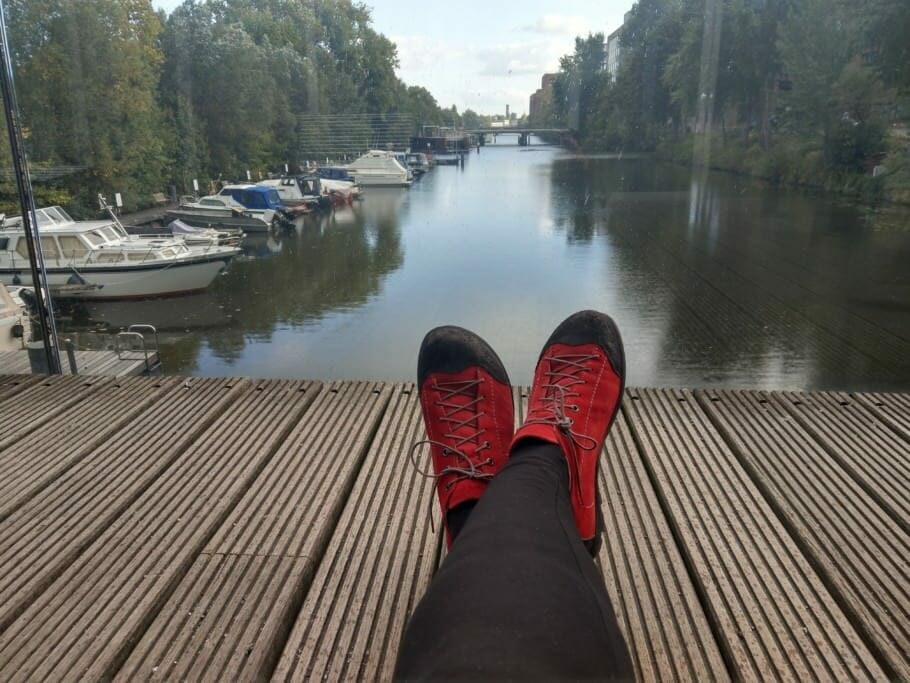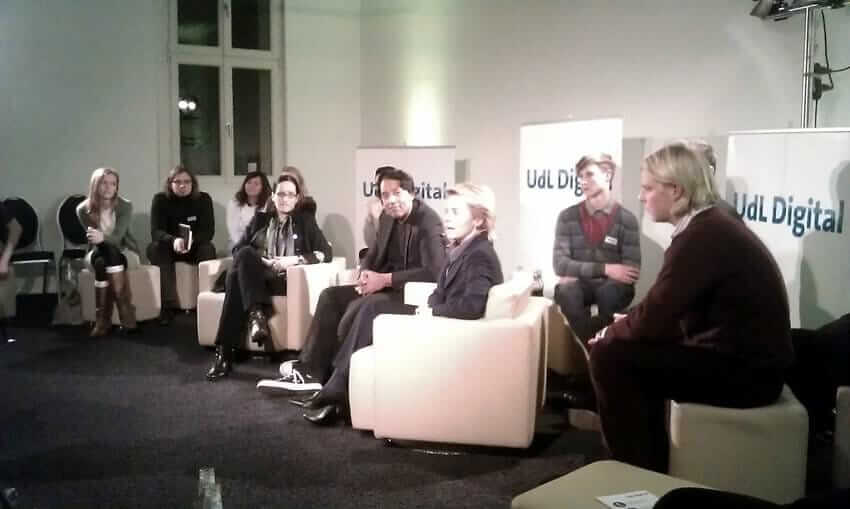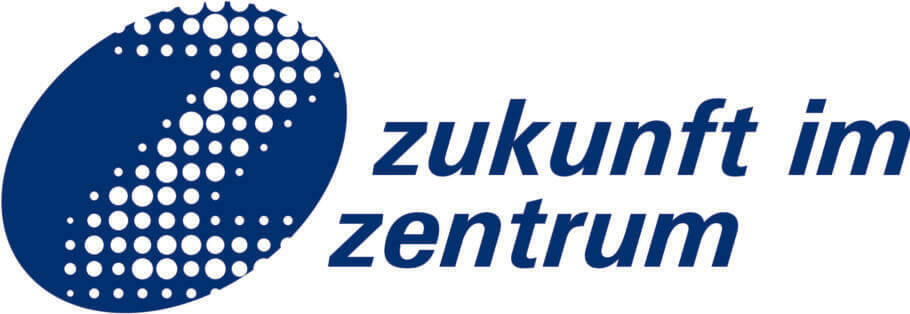Your shopping cart is currently empty!
For their successful, good life Information you really need: Government-funded publisher, awarded the Global Business Award as Publisher of the Year: Books, Magazine, eCourses, data-driven AI-Services. Print and online publications as well as the latest technology go hand in hand - with over 20 years of experience, partners like this Federal Ministry of Education, customers like Samsung, DELL, Telekom or universities. behind it Simone Janson, German Top 10 blogger, referenced in ARD, FAZ, ZEIT, WELT, Wikipedia.
Disclosure & Copyright: Our articles are written and edited by humans, and in some cases like this, we use the assistance of artificial intelligence to optimize texts. Image material created as part of a free cooperation with Shutterstock.
Body language & psychology: interpreting handshakes correctly – 2 x 10 tips
By Simone Janson (More) • Last updated on October 14.09.2022, XNUMX • First published on 16.08.2018/XNUMX/XNUMX • So far 26420 readers, 12686 social media shares Likes & Reviews (5 / 5) • Read & write comments
The handshake is a typical form of greeting psychological a lot can be read. How do you interpret it correctly?

- The history of the handshake – how did the gesture come about?
- Psychology of the Handshake: A Subtle Form of Communication
- 10 tips on how to correctly interpret a handshake psychologically
- Why it's important to address the intricacies of communication
- 10 typical hand greetings and how to interpret them psychologically
- Conclusion: Correctly interpreting people's handshakes tells us a lot about psychology
- Top books on the subject
- Read text as PDF
- Advice on success, goal achievement or marketing
- Book eCourse on Demand
- Skate eBook as desired
The history of the handshake – how did the gesture come about?
The handshake is a ubiquitous social gesture used in many cultures as an expression of Respect, Trust and kindness counts. Its history is long and probably dates back to the early days of human history. It probably arose from basic human instincts and the need to Communication and cooperation.
One theory is that the handshake has its origins in the primitive survival instincts that shaped our ancestors. In one Welt, in which distrust of strangers was essential to survival, showing the empty hand could have emerged as a symbol of peaceful intentions and weaponlessness. The act of shaking hands may thus have served as an archaic pact of unarmedness to promote trust between individuals.
An alternative theory might suggest that the handshake arose from ritual gestures that served to symbolize spiritual or cultural connections. In some cultures this applies Contact with the right hand considered sacred as it is considered stronger or purer. Therefore, the handshake may have originated in religious or cultural ceremonies and over time may have become an everyday greeting gesture.
Psychology of the Handshake: A Subtle Form of Communication
The books on the subject (advertising)
Well, a lot of time has passed since those early days of humanity, but one thing has survived the many cultures of world history: the handshake. And rightly so, because regardless of its origins, the handshake remains a fascinating cultural phenomenon that serves not only as a polite gesture, but also as a window into our past and a tool for creating human connections. In this context, let's take a look at how the handshake can be viewed not only as a social etiquette, but also as an amazing testimony to our evolutionary history.
Because the way we greet each other is a subtle form of communication that reveals deep insights into our Personality and can provide relationships. From a firm handshake to a warm hug – the variety of hand greetings spiegelt not only cultural differences but also individual psychological ones Pattern contrary.
Because a handshake surprisingly also offers the possibility of doing less positive Concealing intentions with false friendliness. This is basically inherent in modern working life: we have to show friendliness, we want something from them or at least want to leave a good impression. And unfortunately this often happens even when we don't know the other person at all sympathisch find. After all, you never know whether a potential employer or Customer stands in front of you. Only certain signals indicate that our or our communication partner's intentions may be wrong and go beyond mere friendliness.
10 tips on how to correctly interpret a handshake psychologically
The handshake, one of the most basic social gestures in many cultures, is much more than just a formal greeting. Behind this seemingly simple act lie extremely deep psychological patterns and hidden signals that can shape the dynamics of an encounter. An overview of how to recognize these.
- Strength: A strong handshake can indicate confidence and dominance, while a weak squeeze can signal insecurity or reticence.
- Duration: A longer handshake can reflect intimacy or uncertainty, while a short squeeze can indicate distance or clear boundaries.
- Temperature: The temperature of the hands during a handshake can indicate emotional excitement (warm hands) or cool reserve (cold hands).
- Palm direction: The direction of the palms during a handshake can indicate openness (palms up) or possible reluctance (palms down).
- Eye contact: The look during the handshake indicates self-confidence (direct look) or possible insecurity (avoided look).
- Move: An active handshake movement can signal enthusiasm or energy, while a passive movement can indicate reluctance.
- Reciprocity: The symmetry of the handshake, whether both hands have equal impact, can indicate balance in the relationship or reflect possible power dynamics.
- Rhythm: A flowing handshake rhythm can indicate harmony and sympathy, while an irregular rhythm can indicate tension or insecurity.
- Additional touches: Adding touch, such as a second hand on the arm, can indicate warmth and familiarity or be an emphasized gesture of dominance.
- Reaction to pressure: The way someone responds to firm pressure can indicate adaptability, self-assurance, or possible resistance.
Why it's important to address the intricacies of communication
Discounts for your success (advertising)!
It is important to take a closer look at the possibilities and Methods deal with correctly interpreting the handshake in order to draw important non-verbal conclusions about the psyche of the other person. In particular, we will examine how personality, self-confidence and reveal the relationship dynamics between two people.
Because beyond physical touch, the handshake reveals complex psychological nuances that need to be understood in order to create a more authentic and deeper interpersonal connection. And by carefully observing these subtleties, we can penetrate deeper into the psyche of the other person and add a nuanced level of interpretation to social interactions.
10 typical hand greetings and how to interpret them psychologically
Below we take a look at 10 typical hand greetings and analyze what psychological nuances lie behind these gestures. Understanding these signals can not only help deepen interpersonal relationships, but also help avoid misunderstandings and promote more conscious communication. An overview:
- The “Cold Fish” – Emotional Restraint: A handshake in which the other person's hand remains motionless in ours for seconds indicates emotional coldness and disinterest. An accompanying convulsive smile reinforces the barrier to open conversation.
- The “Hand-in-Pocket” Gesture – Unclear Intentions: If someone keeps their left hand in their pocket when shaking hands, this creates insecurity in the other person. The question of mere rudeness or a possible hidden weapon adds to the ambivalence. At the same time, it could signal relaxed nonchalance or cause confusion.
- The “move away” – distance through gesture: Instead of bending the hand during the handshake and allowing closeness, the hand is stretched further and the other person is actively pushed away. The supposedly friendly gesture hides a clear intention to maintain distance and prevent closeness.
- The “Friend or Foe” Greeting – Hidden Intentions in the Embrace: This gesture of warmly hugging one another while avoiding the eyes may be used to disguise evil intentions. At the same time, it enables discreet scanning for hidden weapons and underlines political finesse in the interaction.
- The “Bone Crusher” Handshake – Excessive Dominance: Here the other person's hand is squeezed with excessive intensity, reflecting not only physical strength but also a certain ruthlessnessspiegelt. The pain of this often drowns out any kindness, resulting in an awkward and intimidating greeting. This form of greeting not only signals physical dominance and posturing of power, but also reveals a lack of sensitivity and can form the basis for an unpleasant start to a conversation.
- The “warm handshake” – intensive connection: The handshake is done with a firm but not excessive intensity. The palms are warm and eye contact is strong. This form of greeting conveys warmth, openness and the desire for a deeper connection.
- The “hand kiss” gesture – elegant politeness: In some cultures, as a greeting or sign of respect, the other person's hand is touched lightly and then brought to their mouth. This gesture exudes elegance, politeness and respect and is often used in formal or traditional contexts.
- The “elbow greeting” – hygienic alternatives: The elbow greeting can serve as an alternative form of greeting, particularly in times of outbreaks of illness. The elbows of both people touch each other to avoid direct contact while maintaining politeness.
- The “High Five” – Dynamic Enthusiasm: This informal form of greeting, often used among friends, consists of a spontaneous meeting of raised hands, followed by a clapping sound. The “High Five” symbolizes joy, approval and dynamism in a relationship.
- The “dominance handshake” – power play in the palm of your hand: The “dominance handshake” manifests itself by turning the other person’s hand so that your own hand is on top of the other person’s hand. This handshake is a subtle show of power aimed at forcing the other person into a position of humility. If the other person does not give in, another level of dominance can be achieved by placing the second hand on top of the other person's hand. This form of greeting not only emphasizes physical superiority, but also illustrates an attempt to take control from the start and establish a hierarchical dynamic.
Conclusion: Correctly interpreting people's handshakes tells us a lot about psychology
Overall, this shows that the language of handshakes reveals unspoken messages that go far beyond physical contact. A firm grip, which shows dominance and self-assurance, and a weak pressure, which signals insecurity or restraint, are like chapters in a book on interpersonal communication. The duration of the handshake tells about the nature of the relationship - be it an intimate connection or distant politeness.
Even the temperature of the palms provides an insight into emotional states, while eye contact during a handshake can range from self-confidence to shyness. Therefore, the seemingly simple gesture of a handshake asks us to be more attentive, to recognize the hidden nuances and to understand the subtle patterns that give us access to the deep levels of human interaction. In every encounter, the handshake leaves its own narrative trace in the historiography of our interpersonal connections.
Top books on the subject
Read text as PDF
Acquire this text as a PDF (only for own use without passing it on according to Terms and conditions): Please send us one after purchase eMail with the desired title supportberufebilder.de, we will then send the PDF to you immediately. You can also purchase text series.
4,99€Buy
Advice on success, goal achievement or marketing
You have Ask about career, Recruiting, personal development or increasing reach? Our AIAdviser helps you for 5 euros a month – free for book buyers. We offer special ones for other topics IT services
5,00€ / per month Book
Book eCourse on Demand
Up to 30 lessons with 4 learning tasks each + final lesson as a PDF download. Please send us one after purchase eMail with the desired title supportberufebilder.de. Alternatively, we would be happy to put your course together for you or offer you a personal, regular one eMail-Course - all further information!
29,99€Buy
Skate eBook as desired
If our store does not offer you your desired topic: We will be happy to put together a book according to your wishes and deliver it in a format of yours Choice. Please sign us after purchase supportberufebilder.de
79,99€Buy
Here writes for you
 Simone Janson is publisher, Consultant and one of the 10 most important German bloggers Blogger Relevance Index. She is also head of the Institute's job pictures Yourweb, with which she donates money for sustainable projects. According to ZEIT owns her trademarked blog Best of HR – Berufebilder.de® to the most important blogs for careers, professions and the world of work. More about her im Career. All texts by Simone Janson.
Simone Janson is publisher, Consultant and one of the 10 most important German bloggers Blogger Relevance Index. She is also head of the Institute's job pictures Yourweb, with which she donates money for sustainable projects. According to ZEIT owns her trademarked blog Best of HR – Berufebilder.de® to the most important blogs for careers, professions and the world of work. More about her im Career. All texts by Simone Janson.
3 answers to “Body Language & Psychology: How to interpret a handshake correctly – 2 x 10 tips”
-
The power of hidden signals - Part 4: The handshake as ... -
-
The power of hidden signals - Part 4: The handshake as a yardstick -
-
The power of hidden signals - Part 4: The handshake as a yardstick: The greeting with H… #Beruf #Education


















Post a Comment